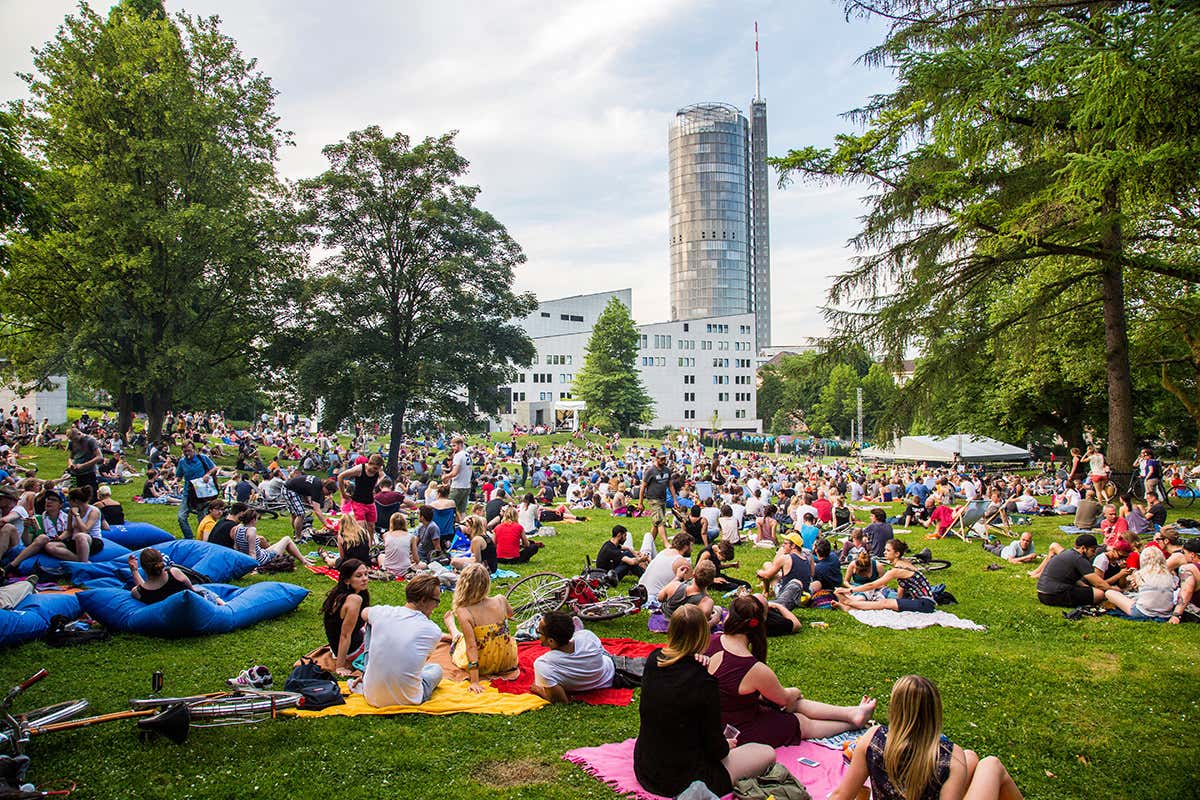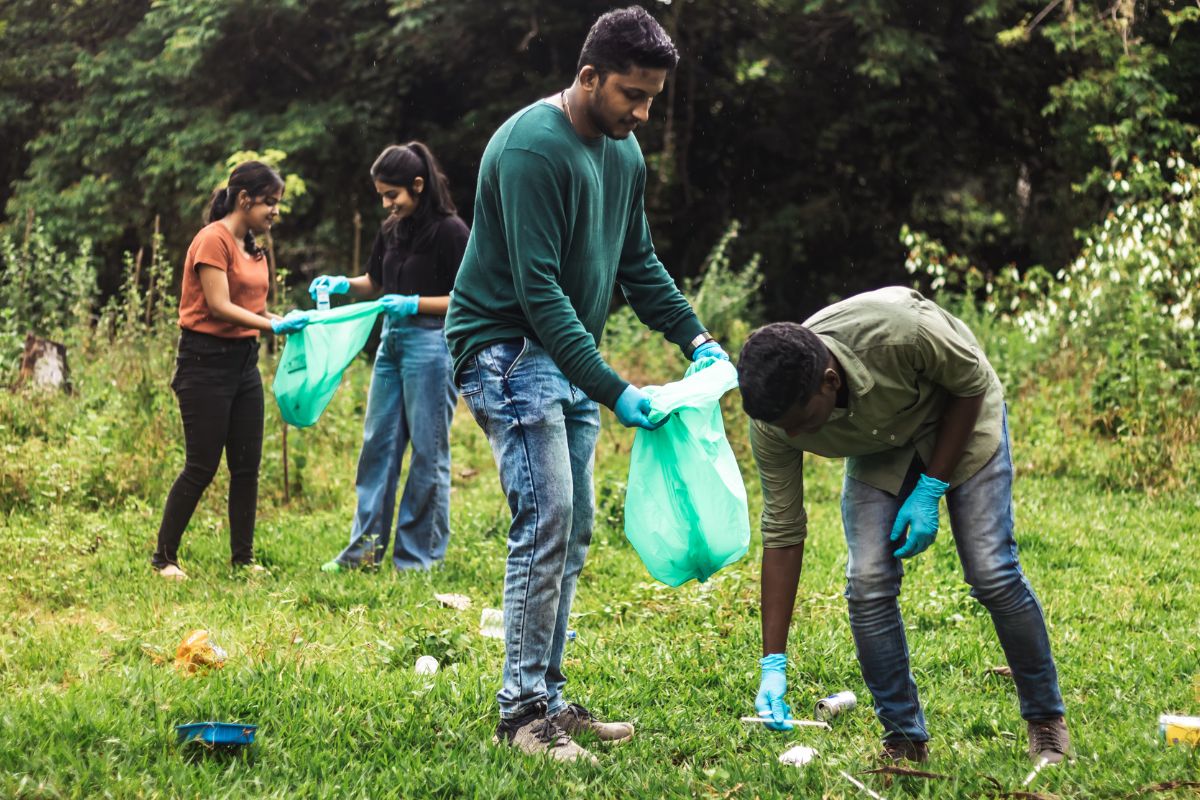Simple Living and Sustainability: Living with Less to Protect the Planet

Understanding Simple Living
As modern society embraces a fast-paced, consumption-driven lifestyle, the concept of simple living serves as a poignant reminder of the value of simplicity and intentionality. It encourages individuals to cultivate a way of life that values experiences, community, and well-being over an accumulation of material possessions. By prioritizing sustainability, simple living not only enhances personal fulfillment but also significantly contributes to the health of our planet.
Core Principles of Simple Living
What does it mean to live simply? At its core, simple living centers around a few transformative principles that encourage a more mindful existence:
- Decluttering: This principle goes beyond tidying up; it involves a conscious effort to minimize possessions, allowing individuals to focus on what truly matters in their lives. By letting go of excess items, people can create physical and mental space for experiences that nourish their souls.
- Mindful consumption: Simple living promotes making informed choices about what we buy, encouraging the use of products that are ethical, sustainable, and purpose-driven. For example, choosing local produce not only supports farmers but also reduces carbon footprints associated with transportation.
- Reducing waste: Embracing practices like composting food scraps, recycling plastic, and avoiding single-use items can dramatically lessen our environmental impact. For instance, integrating habits like meal planning can help families decrease food waste, aligning with the fact that nearly 30% of food produced in the U.S. ends up in landfills.
The Impact of Consumption on Our Planet
As Americans become increasingly aware of their ecological footprint, the statistics regarding waste and pollution are startling. For instance, the average household generates over 4 pounds of waste per person daily, contributing to a staggering volume of refuse that strains our waste management systems. Additionally, the fashion industry, being the second-largest polluter globally after oil, emphasizes the urgent need for consumers to reconsider their buying habits.
By consciously practicing a sustainable approach, individuals can significantly lower their environmental impact. Simple living not only fosters a greater connection with the earth but also cultivates a sense of community and shared responsibility towards a healthier planet. As participants in this lifestyle, we can inspire others and contribute to meaningful change, highlighting how the journey to simplicity can lead us to a sustainable future that benefits everyone.
DISCOVER: Click here to learn about the power of digital detox

The Intersection of Simple Living and Sustainability
Simple living is not merely a lifestyle choice; it is a transformative approach that aligns personal well-being with the broader objective of sustainability. At its heart, this philosophy recognizes the direct correlation between our consumption patterns and the health of our planet. By making incremental changes in our daily routines, we can collectively revolutionize the way we interact with the environment.
Why Minimalism Matters
Minimalism—a cornerstone of simple living—challenges the notion that happiness is tethered to material wealth. Research indicates that the average American household contains over 300,000 items, a stark contrast to the simpler lives of our ancestors. This trend towards accumulation not only burdens individuals with physical clutter but also contributes significantly to environmental degradation through increased production and waste.
By adopting a minimalist mindset, individuals can shift their focus from owning more to valuing experiences and relationships. This shift allows people to reclaim their time and resources, leading to a more fulfilling life. According to a study by the University of Illinois, participating in activities that promote joy—such as spending time with family or engaging in hobbies—has been linked with greater overall happiness compared to purchasing new possessions.
Building Sustainable Habits
Incorporating sustainable practices into our daily routines is a fundamental aspect of simple living. Here are several habits that can guide individuals in their quest for a more sustainable lifestyle:
- Prioritizing Quality over Quantity: Investing in fewer, high-quality items that are built to last reduces the need for frequent replacements. This approach not only saves money in the long run but also curtails resource consumption.
- Embracing Local and Seasonal Foods: Supporting local farmers and choosing seasonal produce not only boosts local economies but also minimizes the carbon footprint associated with long-distance food transport.
- Practicing Mindful Energy Usage: Being conscious of energy consumption through actions like turning off lights when not in use or opting for energy-efficient appliances results in lower utility bills and reduced greenhouse gas emissions.
- Engaging in Community Initiatives: Participating in local sustainability programs, such as community gardens or clean-up efforts, fosters connections within neighborhoods and amplifies the impact of individual efforts on a larger scale.
The implications of our choices resonate far beyond personal convenience; they impact the ecological systems that sustain us. By practicing simple living, individuals become stewards of the planet, making deliberate choices that echo a commitment to environmental conservation. As more people engage in this intentional lifestyle, the cumulative effect can catalyze a profound cultural shift towards sustainability, reminding us that living with less can ultimately lead to a richer, more fulfilling existence.
| Advantage | Description |
|---|---|
| Lower Environmental Impact | Adopting a simple living approach reduces waste and minimizes your carbon footprint, which directly benefits the planet. |
| Enhanced Quality of Life | Living with less fosters mindfulness and appreciation, leading to lower stress levels and greater happiness. |
| Financial Savings | By prioritizing needs over wants, simple living can significantly cut your expenses, allowing for more savings and investment in sustainable technologies. |
| Communal Bonds | Engaging with local communities for sustainable practices strengthens relationships and builds support systems for change. |
The notion of living simply and sustainably extends beyond just the individual; it creates a ripple effect within communities, fostering a deeper commitment to protecting the planet. By embracing this lifestyle, individuals find themselves not only reducing their personal resource consumption but also inspiring others to follow suit, thereby amplifying the positive impacts on the environment and society as a whole. Each step taken towards simplicity is a step towards ensuring a healthier, more sustainable future for generations to come.
DISCOVER MORE: Click here to dive deeper
Creating a Community of Change
While individual actions are critical, the journey towards simple living and sustainability can be significantly amplified through collective efforts. Building a community focused on minimalism and eco-consciousness not only bolsters individual resolve but also creates a supportive network that fosters sustainable practices. Communities that prioritize sustainability often witness a multitude of benefits, enhancing the quality of life for their members.
The Importance of Collaboration
Join forces with local organizations that advocate for environmental sustainability. Initiatives like community swap events and repair workshops promote the idea of sharing and reusing items, effectively countering our throwaway culture. These gatherings not only help reduce waste but also reinforce the concept that we can meet our material needs without new purchases. A study from the Waste Management Association found that neighborhood exchanges can decrease household waste by up to **10-30%** when implemented consistently.
Educational Initiatives and Workshops
Education plays a pivotal role in shifting mindsets towards simple living and sustainability. More community centers and local nonprofits are hosting workshops that teach skills such as meal prepping with local foods, DIY home repairs, and upcycling art. The Environmental Protection Agency (EPA) reports that educational campaigns raise awareness and can lead to a **20% increase** in recycling rates among participants. By investing time in learning and sharing sustainable practices, individuals not only enhance their own lives but empower others to do the same.
Cultivating Eco-Friendly Spaces
Another step is the transformation of unused urban spaces into gardens or parks. Local governments and community groups can collaborate to create green spaces that serve as biodiversity hubs while providing a serene environment for residents. Urban gardening promotes sustainable food practices, allowing individuals to grow food in limited spaces while reducing carbon footprints associated with transportation. According to a report by the USDA, urban agriculture can reduce food-related emissions by nearly **40%,** proving that cultivating green spaces can yield significant environmental benefits.
Encouraging Responsible Consumption
Celebrating local businesses that embody sustainable practices not only supports the economy but also curtails environmental impacts. For example, farmers’ markets present a model of economic sustainability that often results in less waste and a smaller carbon footprint. A report from the Farmers Market Coalition highlights that individuals who buy local produce can decrease emissions related to food miles by **50%** or more. Engaging in advocacy for policies that support these businesses encourages a more sustainable local economy, fostering a culture that prioritizes quality over quantity.
It is essential to remember that simple living does not equate to a lack of decency or community involvement. Instead, it promotes a mindful approach where personal choices echo through society, creating a ripple effect of positivity. By aligning our lifestyles with sustainable practices, we can empower ourselves and our communities to innovate and adapt, ultimately paving the way towards a more sustainable future.
DISCOVER MORE: Click here to dive deeper
Conclusion: Embracing Minimalism for a Sustainable Tomorrow
As we navigate the complexities of modern life, the principles of simple living and sustainability offer a refreshing antidote to consumerism. By intentionally reducing our material possessions and fostering mindful consumption, we not only protect our planet but also enhance our well-being. Embracing a lifestyle centered around minimalism helps cultivate a deeper appreciation for what truly matters, be it relationships, experiences, or the environment itself.
The collective impact of our individual actions can reshape communities, making sustainability a shared value rather than an isolated endeavor. Through collaboration with local organizations, participation in educational initiatives, and commitment to cultivating green spaces, we can create a robust network that champions ecological conscientiousness, which, in turn, leads to tangible benefits for the environment and our health.
Moreover, the focus on responsible consumption encourages a vibrant local economy, promoting businesses that prioritize sustainability and reducing our carbon footprints significantly. As the evidence shows, adopting these practices can lead to substantial reductions in waste and emissions, ultimately paving the way for a cleaner, healthier planet.
In conclusion, simple living is not merely a lifestyle choice; it is a profound philosophy that invites us to reconnect with our values while fostering a more sustainable world. By choosing to live with less, we can inspire those around us and ignite a broader movement towards environmental stewardship. Together, we have the power to make a lasting difference and protect the planet for generations to come.


